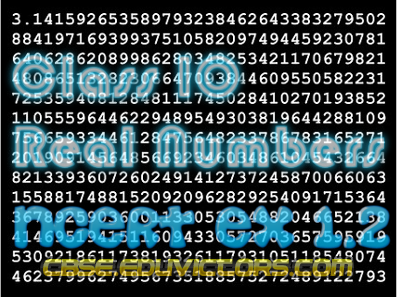Real Numbers (NCERT Exercise 1.2)
Q1: Express each number as product of its prime factors:
(ⅰ) 140
(ⅱ) 156
(ⅲ) 3825
(ⅳ) 5005
(ⅴ) 7429
Answer:
(ⅰ) 140 = 2 × 2 × 5 × 7 = 2 2 × 5 × 7
(ⅱ) 156 = 2 × 2 × 3 × 13 = 2 2 × 3 × 13
(ⅲ) 3825 = 3 × 3 × 5 × 5 × 17 = 3 2 × 5 2 × 17
(ⅳ) 5005 = 5 × 7 × 11 × 13
(ⅴ) 7429 = 17 × 19 × 23
Q2: Find the LCM and HCF of the following pairs of integers and verify that LCM × HCF = product of the two numbers.
ⅰ 26 and 91
ⅱ 510 and 92
ⅲ 336 and 54
Answer:
ⅰ 26 and 91
26 = 2 × 13
91 = 7 × 13
HCF = 13
LCM = 2 × 7 × 13 = 182
Product of the two numbers = 26 × 91 = 2366
HCF × LCM = 13 × 182 = 2366
Hence, product of two numbers = HCF × LCM
ⅱ 510 and 92
510 = 2 × 3 × 5 × 17
92 = 2 × 2 × 23
HCF = 2
LCM = 2 × 2 × 3 × 5 × 17 × 23 = 23460
Product of the two numbers = 510 × 92 = 46920
HCF × LCM = 2 × 23460
= 46920
Hence, product of two numbers = HCF × LCM
ⅲ 336 and 54
336 = 2 × 2 × 2 × 2 × 3 × 7
336 = 2 4 × 3 × 7
54 = 2 × 3 × 3 × 3
54 = 2 × 3 3
HCF = 2 × 3 = 6
LCM = 2 4 × 3 3 × 7 = 3024
Product of the two numbers = 336 × 54 = 18144
HCF × LCM = 6 × 3024 = 18144
Hence, product of two numbers = HCF × LCM
Q3: Find the LCM and HCF of the following integers by applying the prime factorisation method.
ⅰ 12, 15 and 21
ⅱ 17, 23 and 29
ⅲ 8, 9 and 25
Answer:
ⅰ 12, 15 and 21
12 = 2² × 3
15 = 3 × 5
21 = 3 × 7
HCF = 3
LCM = 2² × 3 × 5 × 7 = 420
ⅱ 17, 23 and 29
17 = 1 × 17
23 = 1 × 23
29 = 1 × 29
HCF = 1
LCM = 17 × 23 × 29 = 11339
ⅲ 8, 9 and 25
8 = 2 × 2 × 2
9 = 3 × 3
25 = 5 × 5
HCF = 1
LCM = 2 × 2 × 2 × 3 × 3 × 5 × 5 = 1800
Q4: Given that HCF (306, 657) = 9, find LCM (306, 657).
Answer:
HCF ( 306, 657 ) = 9
We know that, LCM × HCF = Product of two numbers
∴ LCM × HCF = 306 × 657
LCM = 306 × 657 / HCF
= 306 × 657 / 9
LCM = 22338
Q5: Check whether 6ⁿ can end with the digit 0 for any natural number n .
Answer: If any number ends with the digit 0, it should be divisible by 10 or in other words its prime factorisation must include primes 2 and 5 both Prime factors of 6ⁿ = (2 × 3)ⁿ
By Fundamental Theorem of Arithmetic, prime factors of a number is unique.
So 5 is not a prime factor of 6ⁿ.
Hence, for any value of n , 6ⁿ will not be divisible by 5.
Therefore, 6ⁿ cannot end with the digit 0 for any natural number n.
Q6: Explain why 7 × 11 × 13 + 13 and 7 × 6 × 5 × 4 × 3 × 2 ×1 + 5 are composite numbers.
Answer: 7 × 11 × 13 + 13 = 13 ( 7 × 11 + 1 ) = 13 × 78 ,
which is not a prime number because it has more than two factors. So, it is a composite number.
And,
7 × 6 × 5 × 4 × 3 × 2 × 1 + 5 = 5 ( 7 × 6 × 4 × 3 × 2 + 1 ) = 5 × 1009
which is not a prime number because it has more than two factors. So, it is also a composite number.
Q7: There is a circular path around a sports field. Sonia takes 18 minutes to drive one round of the field, while Ravi takes 12 minutes for the same. Suppose they both start at the same point and at the same time, and go in the same direction. After how many minutes will they meet again at the starting point?
Answer: Time taken by Sonia to drive one round of the field = 18 minutes.
Time taken by Ravi to drive one round of the field = 12 minutes.
LCM of 18 minutes and 12 minutes.
∴ 18 = 2 × 3 × 3 =2 x 3²
And, 12 = 2 × 2 × 3 = 2² x 3
LCM of 12 and 18 = product of factors raised to highest exponent = 2² × 3² = 36
∴ Ravi and Sonia will meet together at the starting point after 36 minutes.
☛See also
CH 1: Real Numbers (MCQ)
CH 1: Real Numbers (Study Points)
CH 1: Real Numbers (NCERT Ex 1.1)
CH 1: Real Numbers (Euclid's Division Lemma - Q & A)
CH 1: Problems on Euclid's Division Algorithm
CH 1: Real Numbers (Problems and Answers)
CH 1: Real Numbers (NCERT Exemplar Ex 1.1 Q1-3)

No comments:
Post a Comment
We love to hear your thoughts about this post!
Note: only a member of this blog may post a comment.